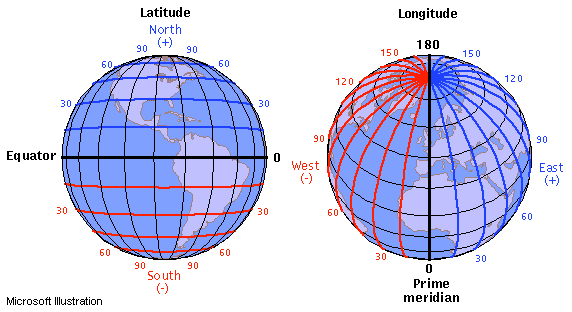Determining your current latitude can be extremely useful for navigation, geographical orientation, and various scientific purposes. Latitude is a geographical coordinate that specifies the north-south position of a point on the Earth's surface. In this comprehensive guide, we will explore different methods to find your current latitude, including using online tools like WhatIsMyLocation.org, GPS, and other devices.
Understanding Latitude

Latitude is measured in degrees, with the equator representing 0° latitude. The North Pole is at 90°N, and the South Pole is at 90°S. Latitude lines run parallel to the equator, and each degree of latitude is approximately 111 kilometers (69 miles) apart.
Using Online Tools to Find Your Latitude
One of the easiest ways to determine your current latitude is by using online tools. Websites like WhatIsMyLocation.org can quickly provide your geographical coordinates, including latitude, based on your device’s IP address or GPS data.
How to Use WhatIsMyLocation.org:
- Open Your Web Browser: Navigate to WhatIsMyLocation.org.
- Allow Location Access: When prompted, allow the website to access your location information.
- View Your Latitude: The website will display your current latitude along with other location details like longitude and address.
Using WhatIsMyLocation.org is a quick and efficient way to find your latitude without needing additional apps or tools.
Using GPS Devices

GPS (Global Positioning System) devices are highly accurate and can provide precise latitude coordinates. Most smartphones come with built-in GPS capabilities, making it easy to determine your latitude on the go.
How to Find Latitude Using GPS on Your Smartphone:
- Enable Location Services: Go to your phone’s settings and ensure that location services are turned on.
- Open a Maps Application: Apps like Google Maps or Apple Maps can show your current latitude.
- Find Your Latitude: In Google Maps, tap the blue dot representing your location. Your latitude and longitude will appear at the bottom of the screen.
Using Dedicated GPS Devices:
For those who need highly precise measurements, dedicated GPS devices are available. These devices are often used in fields like surveying, aviation, and outdoor activities like hiking and sailing.
- Turn on the GPS Device: Ensure it has a clear view of the sky for the best signal.
- Access the Coordinates: Navigate to the menu or interface where the device displays your current coordinates.
- Read Your Latitude: The latitude will be displayed along with the longitude.
Using a Physical Map and a Compass

In the absence of digital tools, you can determine your latitude using a physical map and a compass. This method is less precise but can be useful in remote areas.
Steps to Determine Latitude Using a Map and Compass:
- Identify Your Location on the Map: Find the approximate location where you are on the map.
- Use a Compass to Determine North: Align your map with true north using the compass.
- Estimate Your Latitude: Use the latitude lines on the map to estimate your position.
Using a Sextant

For historical and educational purposes, a sextant can be used to measure your latitude by observing the angle between a celestial object (like the sun or stars) and the horizon.
Steps to Use a Sextant:
- Find the Horizon: Ensure you have a clear view of the horizon.
- Sight a Celestial Object: Align the sextant with the sun or a star.
- Read the Angle: The angle measured by the sextant can be used to calculate your latitude based on the time and date.
Combining Methods for Greater Accuracy
For the most accurate results, combining multiple methods is recommended. Using GPS alongside online tools like WhatIsMyLocation.org can provide highly precise latitude coordinates.
Privacy Considerations
While determining your latitude, it’s essential to consider privacy implications, especially when using online tools:
- Use Trusted Websites: Ensure the websites you use for location tracking are reputable and secure.
- Limit Permissions: Only grant location access to trusted applications and websites.
- Use a VPN: A Virtual Private Network can help mask your IP address and enhance your online privacy.
Conclusion
Finding your current latitude is straightforward with modern technology. Whether you use GPS on your smartphone, dedicated devices, online tools like WhatIsMyLocation.org, or traditional methods, you can easily determine your geographical position. Always consider your privacy and choose the method that best suits your needs. By combining various tools and methods, you can achieve greater accuracy and confidence in knowing your latitude.
